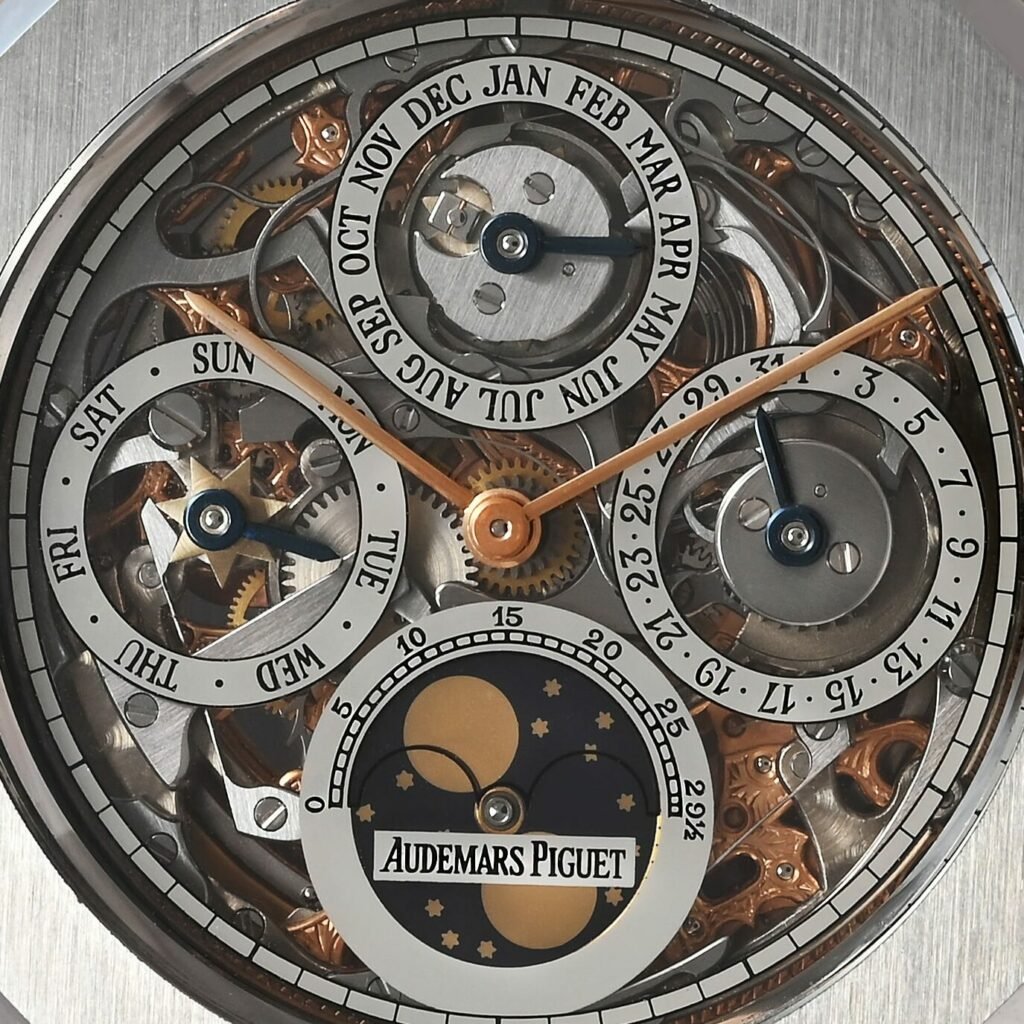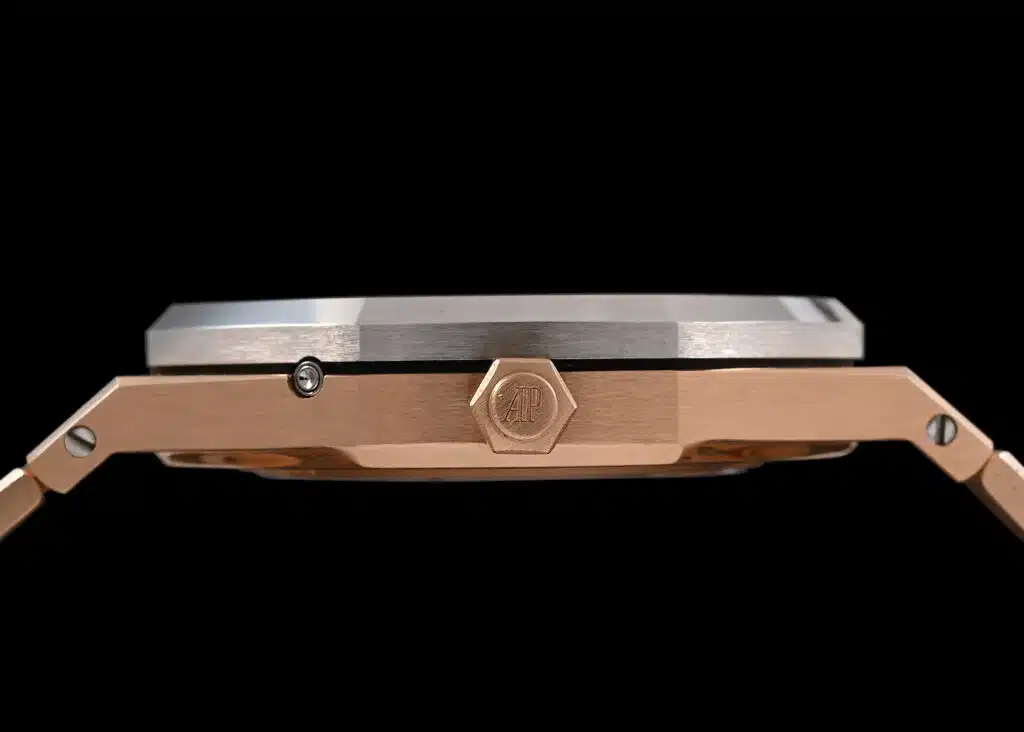The revival of the Perpetual Calendar in Le Brassus
In 1978, in order to reduce the thickness of the mechanism, the designers of Audemars Piguet's Caliber 2120/2800 chose not to equip it with a leap year marker, despite the fact that the company itself had pioneered this in 1955. However, as time went on, the need for an annual marker to set the watch became more and more pressing.
Audemars Piguet made the decision in 1996 with Caliber 2120/2802. The history written since 1996 represents a broad field of interest that will require further lengthy and fascinating research. However, to give you a taste, let us recall some of the milestones that marked this eventful history.
Two models dominated the first period: the Royal Oak 25820 and its openworked variant Model 25829, more than 2,000 of which were produced and sold between 1996 and 2013.
Other creations deserve mention, notably the Royal Oak Jubilee 20th Anniversary 25810OR and its peripheral 52-week indication; the 33 mm Royal Oak Perpetual Calendar for ladies Model 25800 (1996), later Model 25932. Other specialties include the annual calendar introduced in 1999 (25920) and the equation of time in 2010 in the Royal Oak Model 26603.
Despite this creativity and the last-minute rescue of Caliber 2120 at the dawn of the new millennium, customer interest in Royal Oak calendar watches was slowly waning. During 2012, Royal Oak's 40th anniversary year, only 13 examples of the openworked Model 25829, visible in the photo in the 25829TR version in tantalum and rose gold, were sold.
No openworked variant of the Model 25820 had left Le Brassus in three years! The Royal Oak Perpetual Calendar was losing momentum. Teams recall with nostalgia the golden days when Audemars Piguet produced 500 perpetual calendars a year!

François-Henry Bennahmias, who took the reins of the company in 2012, firmly believed it still had a future. In 2015, the watchmakers unveiled a new generation caliber, still based on the 2120, called 5134. It was used to equip the Royal Oak 26574, which featured a revised and dynamic aesthetic. The markets were excited, and to celebrate this launch, a brochure entitled "Audemars Piguet Calendar Watches" was produced that told the story of the brand's calendars. In 2018, a book titled "Audemars Piguet Complicated Wristwatches of the 20th Century" was published. While these publications fueled the interest of collectors, the highlight of this renaissance came in 2017, with the launch of the Royal Oak Perpetual Calendar 26579CE in black ceramic. From that moment there could be no doubt that the renaissance would happen-and its success would exceed all expectations.

At the same time, the perpetual calendar mechanism was completely revised, leading in 2018 to the Royal Oak Selfwinding Perpetual Ultra-Thin RD#2 (6.3 mm). At only 2.89 mm thick, its Caliber 5133 broke the record for thinness previously held for 40 years by Caliber 2120/2800 (3.95 mm). This represented more than just a record and revealed an emerging new approach to mechanical architecture.


